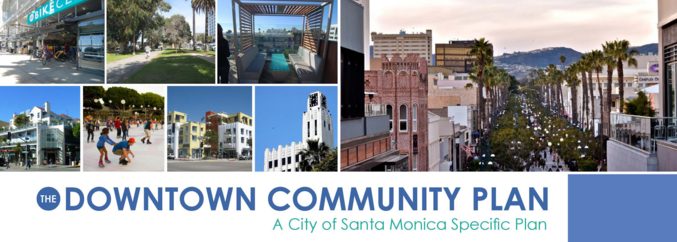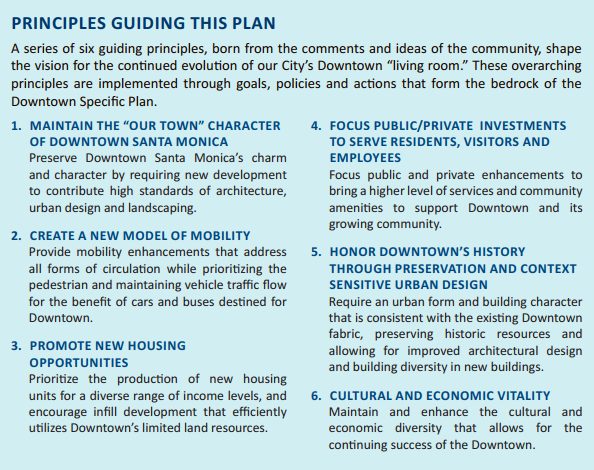
City officials released late last week an updated version of the plan, four years in the making, that will shape the future of Santa Monica’s thriving downtown for the next two decades.
Now, city officials are calling on all community members who have a stake in Downtown Santa Monica’s future, whether you live there, work there, or just like to visit, to weigh in on the new Downtown Community Plan before it goes before the City Council for approval in this summer.
So, what is the plan and why is it important?
In short, the Downtown Community Plan answers the question: what sort of place should the Downtown Santa Monica of 2036 strive to be?

The downtown of 35 years ago looks very different from the downtown of today — and by most accounts, that’s a good thing. The downtown of 2036 will, realistically, see some changes between now and then.
The plan itself is just over 250 pages. As part of the outreach, however, city officials are aiming to make it as accessible as possible. At downtownsmplan.net, visitors can find the full plan and a text-only version of it. Visitors will also find a brief summary of the new plan, called “Release Notes” and a redline version of the plan which allows people to see what has changed since the last draft.
The context for the plan is vital to understanding its importance. First and most immediately, Downtown Santa Monica is about to get a commuter train line this May, marking the first time in more than half a century that Santa Monica and the Westside has been connected to the region by rail.
A growing network of bike lanes and the city’s new bike-share system, the first public bike-share system in L.A. County, have already begun shaping the way people get around in Santa Monica. Then there’s car-share and the rise of transportation network companies (TNCs), like Uber and Lyft, which are also impacting people’s transportation and car-ownership habits.
Santa Monica and West L.A. are at the epicenter of L.A. County’s housing crisis, with rents in the city being some of the most expensive in the state.
Then, there’s the question of economic sustainability. Only a few decades ago, Downtown Santa Monica was a neglected corner of the city that most locals avoided after dark. Today, it a thriving urban neighborhood that was able to weather the last economic recession with remarkable resilience. The plan contemplates strategies for maintaining downtown’s success and avoiding a backslide into the dilapidated Downtown Santa Monica that existed a little more than a generation ago.
The Downtown Community Plan comes out of this context.
It addresses, among many other things, issues as specific as how wide sidewalks should be in certain areas, how to create more open space, and how to handle circulation as people’s transportation habits change. The plan outlines ways to make safer, shared streets in the downtown.
It also looks at how the city can prioritize new housing — affordable to a wide range of incomes — in the core. The plan lays out strategies for preserving historic structures while strategically redeveloping underutilized parcels in a way that provides the most benefit to the community. And it keeps a focus on assuring that downtown continues to thrive as the city’s economic engine.
City officials are actively soliciting feedback on the draft plan. Those interested can sign up for updates at downtownsmplan.net.
The plan is scheduled to go before the Planning Commission on March 2, 3, and 9.
According to city officials, there will be focus groups of about 20 people each scheduled for March, April, and May. There will be as many focus groups as need be to include everyone who wants to participate, according to city officials. There will also be a speaker series related to the plan.







